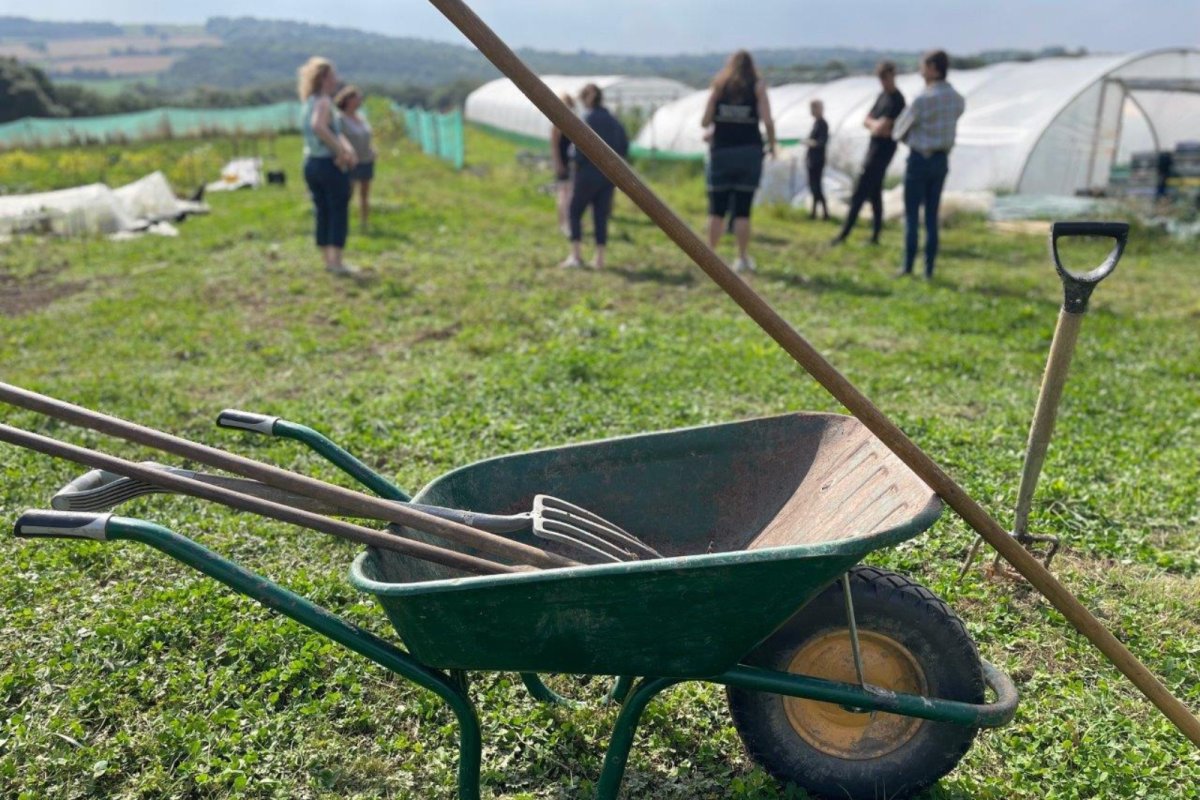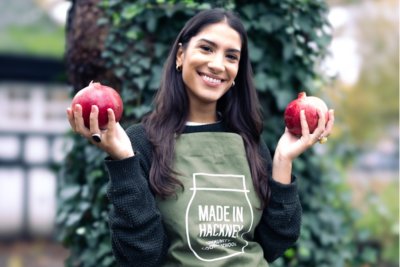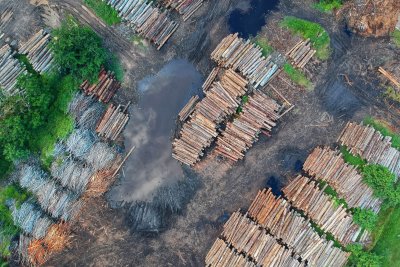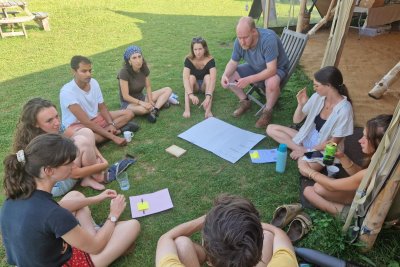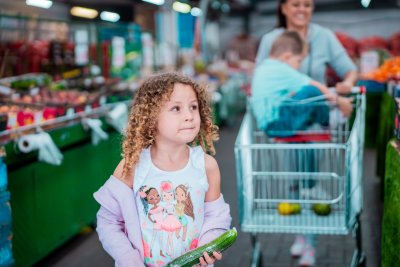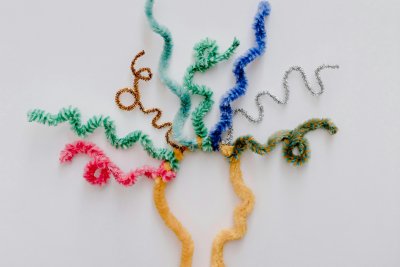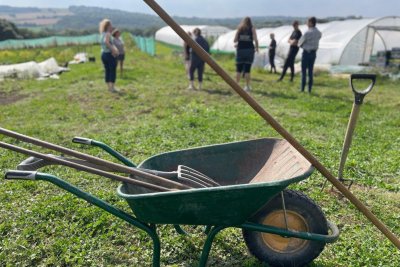 Regather Sheffield. Credit: Sarah Williams
Regather Sheffield. Credit: Sarah Williams
Last week the Bridging the Gap team presented the programme to a packed room at the ORFC – our discussion covering everything from indoor toilets to embedding dignity into how we work, to how we can be food policy and system beavers (read on to find out more!). We shared the evolution of the idea, struggles the movement has faced in previous attempts to tackle this mammoth issue, how we plan to do things differently with an experimental approach on this programme and what that might lead to in terms of policy and financial measures. The energy and contributions from the floor were everything we could have hoped for and more.
A quick check in told us that the room contained around 50% farmers, 40% traders and 30% campaigners (including overlap between these groups) - a mix that lent richness to the discussions, that was exactly what we were hoping for.
So, what did we learn from our incredible panel and participants?
Don’t forget the four As of food access
While it’s nothing new, we were reminded of the four As by Jonathan Pauling, CEO of Alexandra Rose Charity’s Rose Voucher scheme, Access, Affordability, Acceptability and Awareness. What ARC have learnt is that while price is a key barrier, the other elements need to be built in. They have found that while local food markets are great at meeting all of these criteria, very few other places in the food economy are. The UK is littered with food deserts, food prices are soaring, supermarkets gear their offer to dominant cultural tastes with confusing and contradictory health labelling. So, what can Bridging the Gap demonstrate as workable solutions to overcome these 4 As with climate and nature friendly food (CNFF)?
Audience members spoke passionately about their food not always being more expensive yet there are perceived gaps and bridges to build so that everyone can physically access CNFF – particularly an issue in urban areas, but also relevant for rural communities. And how do we make CNFF a realistic and reachable aspiration, just as half a century ago an inside toilet was an aspiration and is now a given. So how do we change the discussion and whose job is it to build these bridges?
We were also reminded that for everyone cooking from scratch is not an option so how do we include a broader Right to Food into the campaign messages for this programme?
Beyond solidarity
Farmers, traders and social workers told of the successes they have had with solidarity schemes, of the appetite there is for CNFF reaching all people from all backgrounds and walks of life. Dr Angelina Sanderson Bellamy, from the Uni of West England, spoke of the success of the Accessible Veg project, which offered veg bags to food insecure households through solidarity, leading not only to a reduction in food insecurity but a greater sense of wellbeing through community in terms of connection to the farm and positive contact with people delivering the veg. But how does this translate to a scalable offering that does not depend on postcode or favourable neighbours? Where is the safety net and how can a programme like ours learn from and use the concept of solidarity to make a national case for the use of tax to ensure these health and wellbeing benefits through a scalable offering?
Power, dignity and new narratives
At the heart of the food system, as with any human system, power is playing a significant role. One audience member called for a move beyond money to remove the power issue from the equation. Another reminded us that dignity needs to be central to the conversation and the current handout model is far removed from this. Others highlighted that playing into existing narratives and structures serves a role but we also need to be ready to challenge – for example the market economy has failures, governments intervene and subsidise in many ways so we should be ready to challenge these models and the approach of current interventions.
Simulations and scale – a time to experiment
So, how can Bridging the Gap really help move us forward, increasing access, affordability, acceptability and awareness of climate and nature friendly food. Julie Brown from Growing Communities set out our experimental approach – using the opportunity for this programme to facilitate some testing of ideas, using a small intervention (or injection of cash) into a process, to simulate what government or market intervention might unlock to correct the broken food system and bridge the gap. As Julie put it, the programme will ultimately aim to “level the economic playing field”, reducing the price differential between industrial food and climate and nature friendly food. Pete Ritchie of Nourish Scotland, highlighted the scale of what we need to change – “pallets not parcels” - particularly for those trading and trying to get the attention of the policy makers.
Being the beavers
As the session began to draw to a close one contributor called for us to think of ourselves as beavers as we go about our work to "bridge the gap". This referred back Sustain’s Programme Director, Sarah Williams, presenting the image of the movement divided into two riverbanks, one tackling food insecurity and the other climate and biodiversity, separated by a fast-flowing river.
We loved this extension of our analogy and the implication that we might hope to slow the flow of the tidal wave of a broken food system we are currently facing, with measures that can genuinely enable all people to access the food they need to live healthy, happy and dignified lives, while preserving nature and our climate for future generations. Let’s be those beavers!
Get involved
We will be creating lots of opportunity to build shared understanding and harness your experiences. Sign up to our newsletter and send us your case studies of great initiatives that are bridging the gap in your area.
Want more? Read our other blogs by Jonathan of ARC on his food access perspective, Julie of Growing Communities on why it's essential to close the price gap and Sarah from Sustain's story of developing the programme.
Bridging the Gap: Bridging the Gap to climate and nature friendly food for all.
Sustain
The Green House
244-254 Cambridge Heath Road
London E2 9DA
020 3559 6777
sustain@sustainweb.org
Sustain advocates food and agriculture policies and practices that enhance the health and welfare of people and animals, improve the working and living environment, promote equity and enrich society and culture.
© Sustain 2024
Registered charity (no. 1018643)
Data privacy & cookies
